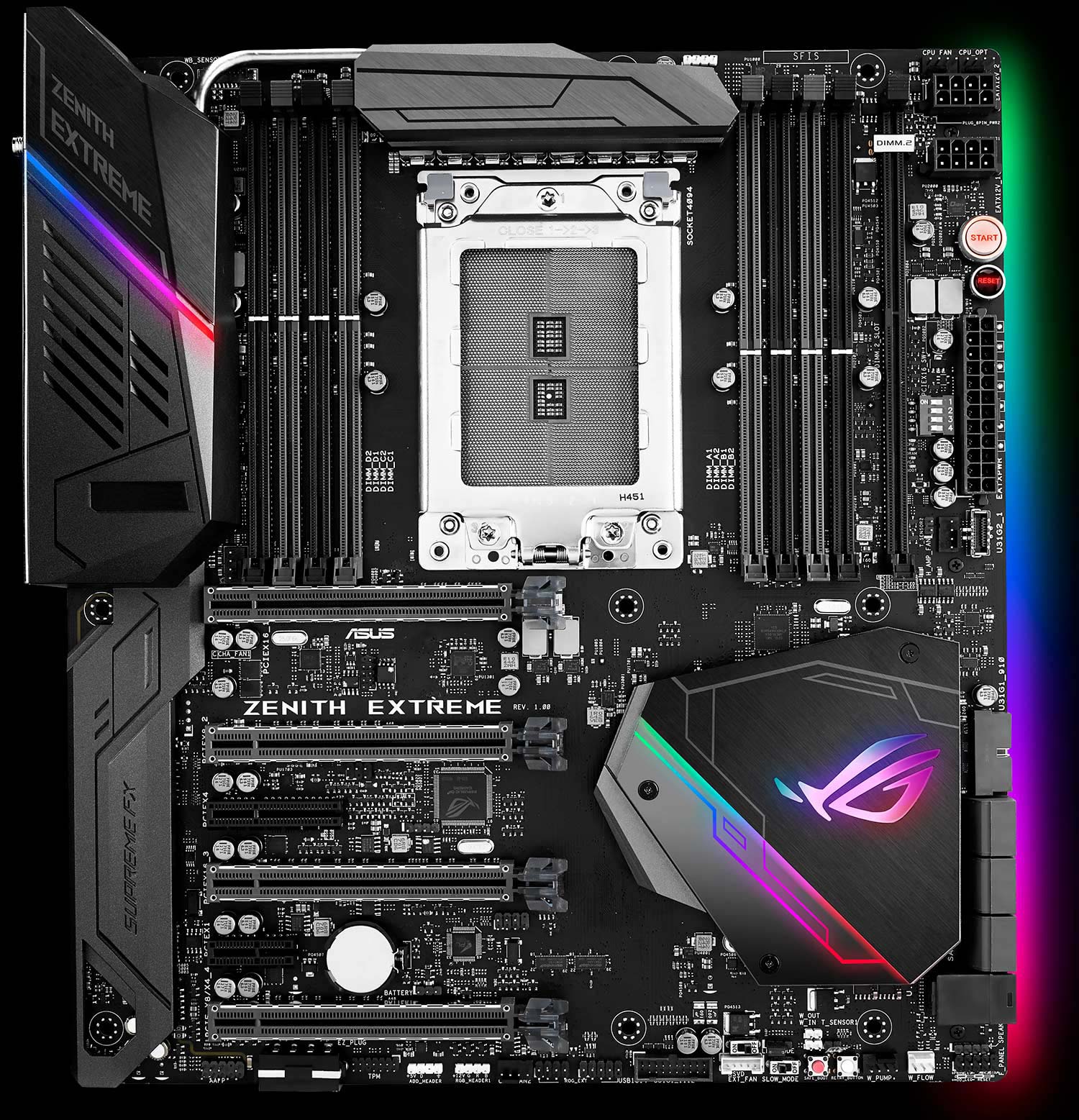AMD X399 Supports Bootable SATA RAID, But Not NVMe RAID
For all that X399 offers, it has a storage problem.
For years, we've railed about the lack of PCI Express lanes on motherboards; some people may not realize just how neutered modern desktops really are. In August 2005, nVidia (how it was spelled at the time) released the nForce 4 SLI X16 chipset for the Pentium 4 in Socket LGA775. The chipset supported a whopping 40 PCI Express lanes. Not long after, Intel realized that Nvidia was cutting into chipset sales and stopped licensing x86 to the company. In the years hence, we've been stuck with 16 PCIe lanes.
The new Z270 was a game changer with a massive 20 PCIe lanes. (/sarcasm)
Enthusiasts plug more devices into the PCIe bus when they're available. AMD's X399 platform supports a massive 64 lanes (four are dedicated to the Southbridge), and that allows you to use two video cards at full speed, add on a zippy 10-gigabit Ethernet, and even pop in a crisp new sound card if you so desire.
What the X399 doesn't give you is the ability to utilize NVMe SSDs in a bootable RAID. We reached out to a few industry sources and learned that X399 will allow users to build an array with SATA products and boot from it, but AMD hasn't employed a way to boot from NVMe SSDs together in a RAID 0 array like Intel.
We were also told that AMD is going to enable the feature, but there isn't a firm timeline. It's one thing to talk about booting from an array of speedy next-generation storage devices that can surpass 5,000MB/s with just two drives; it's another thing to actually deliver.
Get Tom's Hardware's best news and in-depth reviews, straight to your inbox.

Chris Ramseyer was a senior contributing editor for Tom's Hardware. He tested and reviewed consumer storage.
-
I remember 8086 It does seem odd that no one really is very disturbed that Intel literally screwed millions of people out of a superior chip set solution merely in order to maintain market share.Reply
Seriously, there are people who pee all over themselves at the thought that their pee pee selfies are not absolutely private from the gov't, but not a word about this.
A strange world indeed -
zippyzion Intel's NVMe RAID support isn't all flowers and lolipops anyways. You have to pay to unlock features built into the motherboard for anything more than RAID 0, you can't make it a bootable array unless you use Intel SSDs, and to cap it off it is Skylake-X only. Get your wallets out, because Intel will make you pay, a lot, for this decidedly premium feature. I suspect that once AMD has it figured out that they won't be charging people extra for the feature.Reply -
Veradun Are you serious? You rshould really read specs before wrinting this garbage.Reply
http://s6.postimg.org/m2evwyult/screenshot_22.png
The M.2 SSDs go into a "riser" near DIMM slots. -
Veradun Are you serious? You should really read specs before writing this garbage.Reply
http://s6.postimg.org/m2evwyult/screenshot_22.png -
shabbo Not worth the trouble of doing software RAID imo when building a $5K workstation in the first place. If you want reliable performance we have 20 extra PCIE 3 lanes to leverage with on the AMD solution for manufacturers to work with. And Oh...if you really need all that extra I/O for large GPU work loads, then buy a Radeon Pro SSG and get the job done like a true professional.Reply -
TJ Hooker Reply
What's your point? This article is about X399 not supporting NVMe RAID. Of course the mobos support M.2/NVMe in non-RAID configs.20017572 said:Are you serious? You rshould really read specs before wrinting this garbage.
http://s6.postimg.org/m2evwyult/screenshot_22.png
The M.2 SSDs go into a "riser" near DIMM slots.
Edit: Actually, specifically booting from an NVMe RAID configuration. Based on this article, it sounds like non-bootable NVMe raid setups are still supported. -
JamesSneed I'm sure they will have support added over time. At least they are not disableing PCIE lanes or selling raid keys to charge extra to enable features already in the cpu/board.Reply -
eklipz330 not a big deal for those that are not raiding.Reply
this will most likely be an issue for workstations and an "issue" for elitists.
